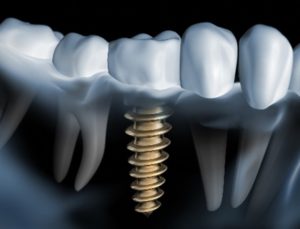 If you’re ready to treat your tooth loss with dental implants, your first step is to schedule a consultation with your dentist. During your appointment, it might seem like they are speaking in a foreign language as they use a variety of unfamiliar words. Don’t worry, you can avoid any confusion. Here are a few of the most common dental implant terms you should know.
If you’re ready to treat your tooth loss with dental implants, your first step is to schedule a consultation with your dentist. During your appointment, it might seem like they are speaking in a foreign language as they use a variety of unfamiliar words. Don’t worry, you can avoid any confusion. Here are a few of the most common dental implant terms you should know.
Abutment
A dental implant consists of 3 components: an implant post, an abutment, and a restoration. The abutment is a special fixture that attaches the restoration to the implant post.
Abutment Teeth
Traditional bridges and partials are held in place by “abutment” teeth. They are most often adjacent to the missing teeth. Since implant posts anchor your restorations to your jawbone, you won’t need to worry about altering healthy teeth to support your bridge.
Crown
When envisioning a crown, you might picture a cap that covers the entire surface of a tooth above the gum line, they can vary a bit depending on why they are needed. A dental crown can also be used to fill the space of a single missing tooth. It’s attached to the abutment to connect to the implant.
Endosteal Implant
An endosteal implant is the most common type used in modern dentistry. Small titanium screws, plates, blades, or cylinders are surgically placed into the jawbone to support 1 or more missing teeth.
Eposteal Implant
Unlike an endosteal implant, it’s placed on the jawbone. Typically, it’s most often recommended for patients who have a high risk of advanced bone loss because it isn’t inserted into the jaw. Instead, it rests on top of it just below the gum tissue.
Osseointegration
Traditional dental implants are made of titanium because it’s biocompatible, so it integrates well with the body. Osseointegration refers to the process that occurs when your bone fuses to the implants. It enhances the strength between the implant and your living bone to support your dental implants for many years with the proper care.
Subperiosteal Implant
A subperiosteal implant consists of a metal framework that sits on top of the jaw, which protrudes through the gum tissue to secure the restoration. Patients who can’t wear traditional dentures or have minimal bone height may benefit from subperiosteal implants.
Titanium
Titanium is the preferred material for implant posts because it is lightweight, durable, and integrates well with the body. It also has a high oxygen affinity to form a thin oxide layer when placed in the bone. As a result, it creates a stronger bond than other materials.
If you have any questions during your consultation, don’t hesitate to ask your dentist for clarification. They’ll provide the information you need to feel confident about the road ahead.
About Dr. Nabeel Ahmed
Dr. Ahmed earned his dental degree at the Schulich School of Medicine and Dentistry from Western University. He regularly continues his training to provide advanced services, like sedation dentistry and dental implants. If you’re ready to complete your smile, contact our office today to see if dental implants are right for you.
